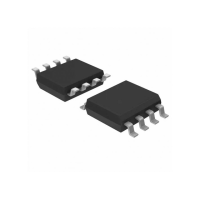133
ABOV Semiconductor Co., Ltd.
Figure 11.33 USART SPI Clock Formats when CPHA=1
When CPHA=1, the slave begins to drive its MISO output when SS goes active low, but the data is not defined until
the first SCK edge. The first SCK edge shifts the first bit of data from the shifter onto the MOSI output of the master
and the MISO output of the slave. The next SCK edge causes both the master and slave to sample the data bit value
on their MISO and MOSI inputs, respectively. At the third SCK edge, the USART shifts the second data bit value out to
the MOSI and MISO output of the master and slave respectively. When CPHA=1, the slave’s SS input is not required
to go to its inactive high level between transfers.
Because the SPI logic reuses the USART resources, SPI mode of operation is similar to that of synchronous or
asynchronous operation. An SPI transfer is initiated by checking for the USART Data Register Empty flag (DRE=1)
and then writing a byte of data to the USTDR Register. In master mode of operation, even if transmission is not
enabled (TXE=0), writing data to the USTDR register is necessary because the clock SCK is generated from
transmitter block.

